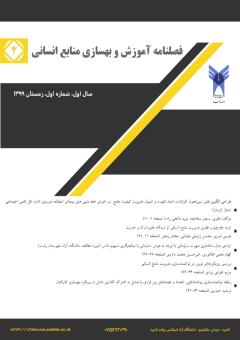Designing and explaining the pattern of organizational silence based on the personality patterns of employees Case study: (Bandar Abbas Municipality)
Subject Areas : title1
hosein akhlaghi
1
![]() ,
mehdi bagheri
2
,
Sirajuddin Mohebi
3
,
mehdi bagheri
2
,
Sirajuddin Mohebi
3
1 - PhD student in public administration, Qeshm Branch, Islamic Azad University, Qeshm. Iran.
2 - گروه مدیریت، واحد بندرعباس، دانشگاه آزاد اسلامی،بندرعباس
3 - Associated Professor, Department of Public Administration, Qeshm Branch, Islamic Azad University, Qeshm, Iran.
Keywords: organizational silence, personality patterns of employees, pattern design and explanation, Bandar Abbas Municipality,
Abstract :
The current research intends to design and explain the pattern of organizational silence based on the personality patterns of employees. This research is exploratory and descriptive-survey. A questionnaire was used to collect information. that the Cronbach's alpha coefficient of the questionnaires is above 7. To test the validity of the questions, content validity was used, and for this purpose, the opinions of experts, academic professors and expert experts were used. , Confirmed. The statistical population in this research consists of the employees of Bandar Abbas municipality, among whom 152 people were selected as a sample by simple random method. Exploratory factor analysis test was used to analyze the information. After conducting the exploratory factor analysis test, finally 5 factors has been identified: Causal conditions (management factors with the highest priority and target factors with the lowest priority), intervening conditions ( Environmental factors with the highest priority and cultural-factors with the lowest priority (conditions that create the foundation) Lack of capable and motivating managers with the highest priority and non-participatory decision-making with the lowest priority (leader conditions) Change in organizational structure with the highest priority and management of organizational culture with the lowest priority ), the outcome conditions (promoting organizational commitment with the highest priority and promoting the emotional commitment of employees with the lowest priority)


